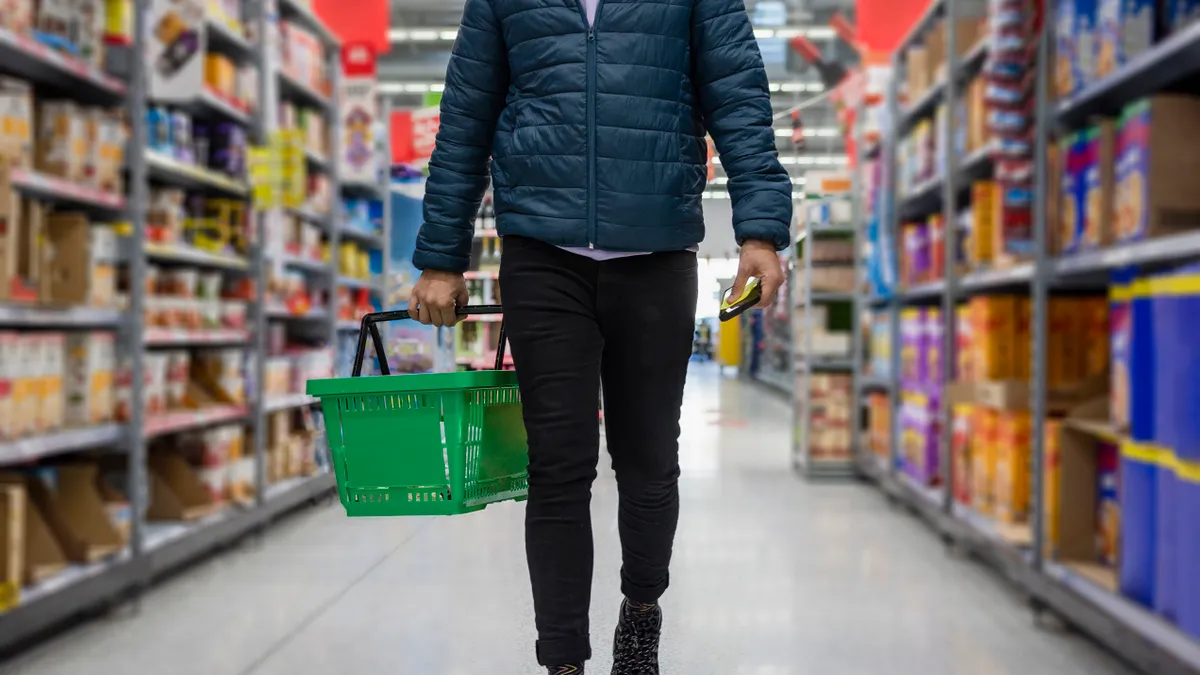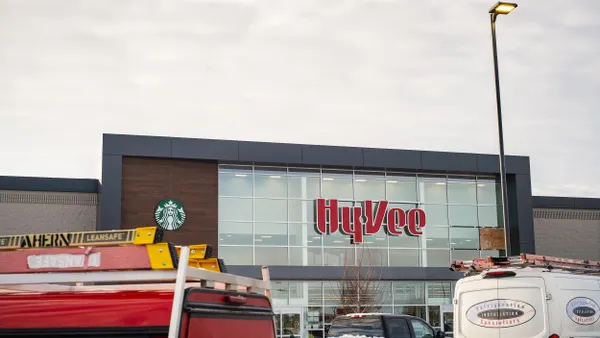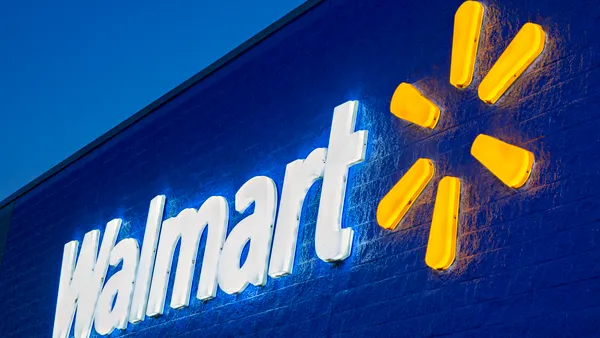As 2022 got underway, Grocery Dive published its annual trends forecast for the year ahead. The experts we interviewed foresaw a year filled with opportunities for the grocery industry to innovate and advance even as growing inflation, supply chain bottlenecks and persistent labor shortages preoccupied food retailers.
With robust shopper interest in at-home eating providing a strong tailwind and grocers increasingly embracing technology to drive their operations, analysts predicted that food retailers would spend 2022 focusing on rapidly unfolding trends like ultrafast delivery, automation and shopper demand for premium products despite the fast-rising prices permeating the economy.
In addition, experts expected retailers to delve deeper into the advertising business through retail media networks; develop more sophisticated techniques for mining the data they collect to guide their operations; and step up their efforts to satisfy customer demand for easy access to prepared meals. Analysts also saw opportunities for grocers to build revenue streams serving corporate and government customers in 2022.
Of course, making predictions always comes with the risk of being off the mark — or even missing something entirely. So as 2022 winds down and we work on our top trend picks for 2023 — set to publish in early January — Grocery Dive decided to grade these prognostications based on what actually panned out in another unpredictable year for the grocery industry.
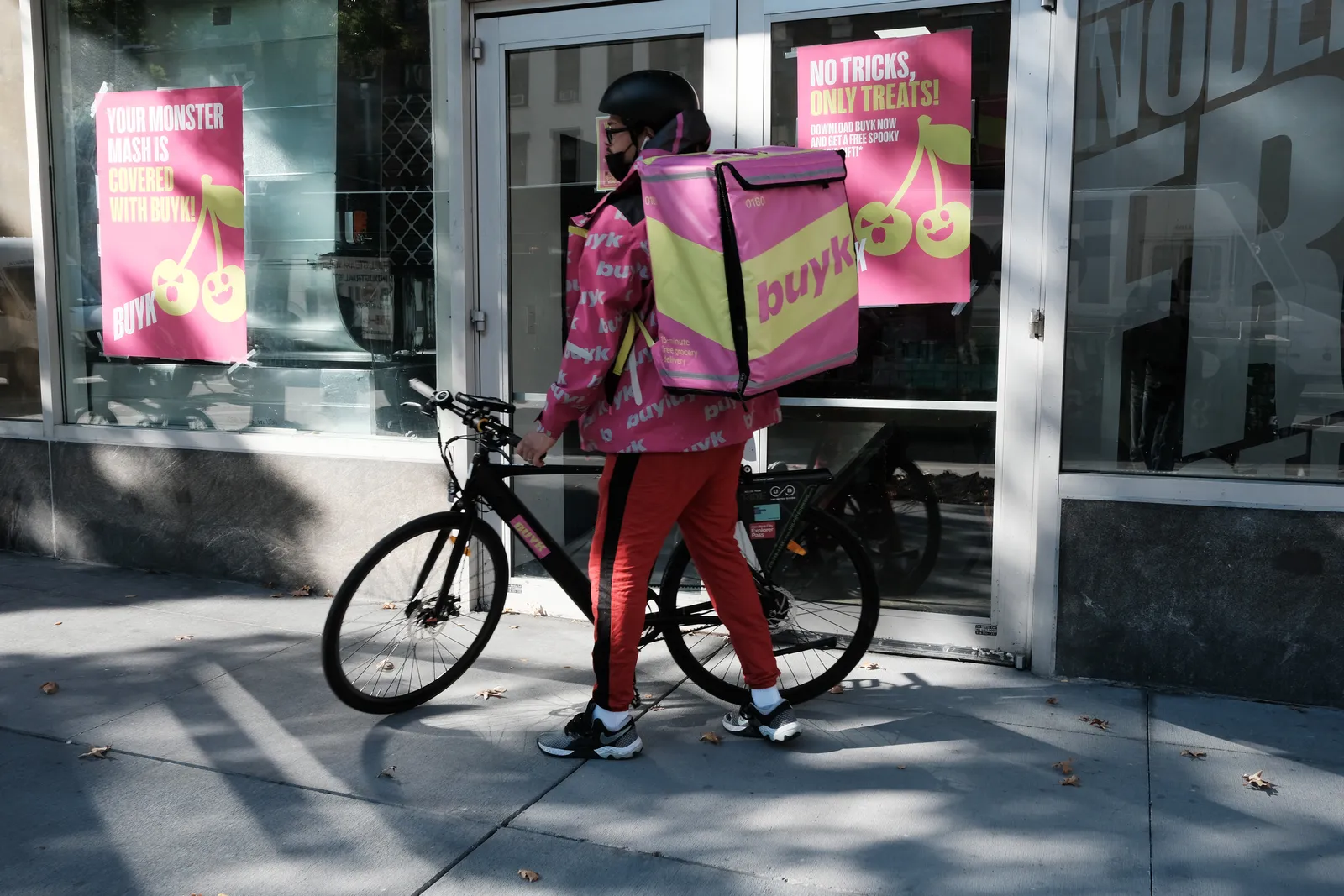
Prediction: Quick delivery expands
Grade: D+
The U.S. saw the rise of quick delivery firms in 2021 fizzle in 2022 as some players closed and others got acquired amid the challenging economic landscape. Over the course of the year, Fridge No More and Buyk shuttered, Jokr left the U.S. to focus on Latin America and Getir bought Gorillas. Gopuff has maintained its reign stateside in the shrinking ultrafast delivery market. A need for speedy delivery and easy access to convenience items — and the higher costs typically associated with faster service — took a back seat to ongoing high inflation that hampered consumers’ spending power.
While standalone quick delivery firms relying on dark stores faced a turbulent year, quick delivery as a service has kicked off. Publix, in partnership with Instacart, launched 15-minute delivery in a Miami neighborhood with a new “nano-fulfillment” center in April. A few months later, DoorDash unveiled dark store-powered rapid delivery as a service. Instacart added Schnuck Markets to its roster of grocery partners using the company to power 30-minute convenience delivery.
From the looks of what’s happened during 2022, quick delivery may have a better shot as a complementary service offered by retailers than as its own viable business model.
Prediction: Grocers turn to automation to offset labor shortages
Grade: A
The employment picture in the food retailing industry looked much the same when 2022 got underway as it did last year with grocers struggling to bring on and retain workers in a strong job market. Hiring conditions remained challenging all year, and while grocers sought to present their facilities as attractive places to work where people can build long-term careers, automation played an essential role in keeping the business humming in 2022.
Self-checkout proved especially popular with grocers this year as they raced to keep serving shoppers in their stores even as they dealt with a shortage of workers. Amazon continued rolling out its Just Walk Out frictionless checkout technology as it opened more stores in its Amazon Fresh supermarket chain, and computer-vision startups like Trigo and Grabango made strides toward their goal of offering checkout-free solutions for use in full-size grocery stores.
In December, United Natural Foods, Inc. (UNFI) said it had decided to devote significant resources to automation, and tied those investments to its growth expectations.
Kroger’s rapid rollout this year of its Ocado-powered robotic fulfillment warehouse was perhaps the most high-profile example of how the industry doubled down on automation to serve customers in 2022. The high-tech warehouse network may not have been created expressly to combat a labor shortage, but Kroger’s ability to ramp up its use of robotics at a time when workers have been hard to find was certainly good timing.
Prediction: The grocery industry gets better at using consumer data
Grade: B+
Grocers made strides this year in their efforts to turn the detailed streams of data they collect about shoppers into strategies to increase connections with shoppers and boost sales.
With inflation causing shoppers to become hyper-focused on prices, grocers doubled down in their use of loyalty programs to turn insights about people’s shopping habits into personalized promotions.
In an indication of how consumers have gravitated to programs designed to turn information about how they shop into savings, The Fresh Market said in October that it had signed up 1 million shoppers for its loyalty program only seven months after launching the initiative. In August, online grocer FreshDirect announced that it planned to establish a loyalty program next year to help juice up sales.
Amazon, meanwhile, rolled out an analytics tool that lets CPGs use data collected by its Just Walk Out frictionless checkout technology to gauge shopper interest in products and glean insights into how people decide what to purchase when walking around a store.
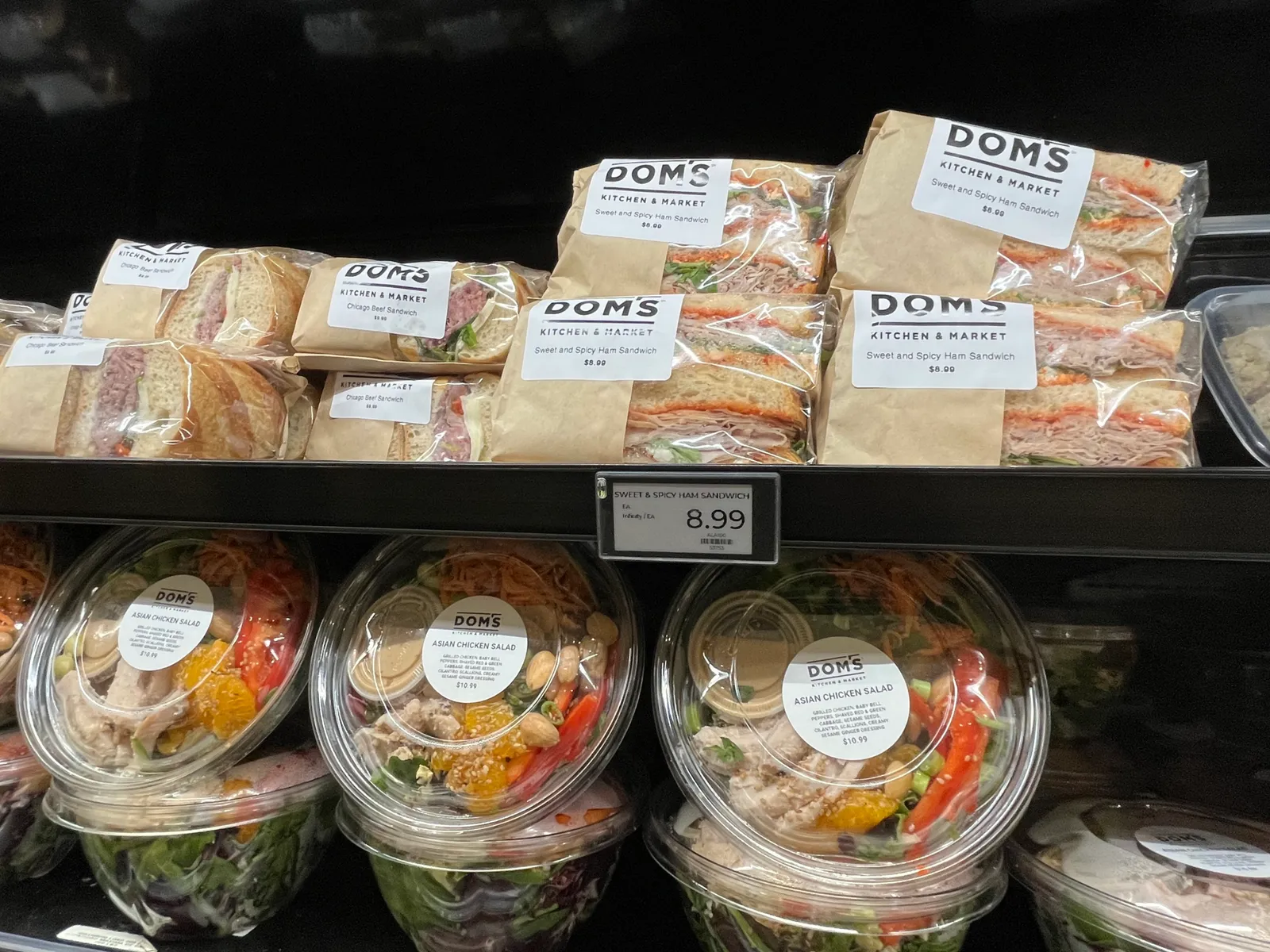
Prediction: Meals get fresher and more convenient
Grade: A
While COVID-19 concerns prompted many consumers to cook at home more and dine out less, 2022 saw high inflation continue to keep people’s meal dollars at grocery stores for cost-saving and convenience measures.
With consumers blending at-home cooking with prepared foods, grocers and their e-commerce partners heavily leaned into meal solutions throughout this year and show no signs of stopping. Just a few days into the New Year, Instacart launched an in-app Ready Meals Hub. Five ShopRite stores in New Jersey rolled out store-within-a-store sections centered around meal solutions and Kroger added more ghost kitchens to its stores including a virtual food court at a Dallas store.
Bristol Farms opened a 34,000-square-foot food hall-focused store in Irvine, California, while 2,000 miles away, fledgling Chicago chain Dom’s Kitchen & Market opened its second store focused on serving as a destination for meals and gourmet experiences.
Foodservice and prepared foods sales have rebounded for grocers, hitting $31.3 billion in the 52 weeks ending Aug. 27 — up 9.3% from the year-ago period, according to the Food Industry Association (FMI). Eighty-two percent of food retailers and wholesalers surveyed in April said they plan to allocate more space for fresh prepared and grab-and-go items, per a report this summer from the trade group. Meals were a big deal for grocers this year and there are still more areas for them to expand and explore.
Prediction: Retail media networks expand
Grade: A+
It seemed like nearly every major food retailer this year ramped up their retail media networks, adding new ways to capture more CPG advertising spend and leverage their customer data to build out alternative revenue streams.
Kroger was busy this year expanding its in-house retail media arm to include new advertising opportunities such as connected TV and video, while Dollar General teamed up with more partners for its retail media network to for brands to engage with rural customers.
Walmart, in particular, has been vocal recently about its efforts, from making premium ads a key element of its media business to adding new partners to Walmart Connect. Last month, Walmart CEO Doug McMillon told investors that e-commerce and ads together create a “mutually reinforcing” ecosystem.
Ahold Delhaize’s Peapod Digital Labs announced plans to shift its retail media business into a fully in-house operation. BJ’s Wholesale Club revealed its retail media program, using Microsoft’s PromoteIQ automated vendor marketing platform to manage the initiative.
The fervor in this area will likely continue. As the proposed Kroger and Albertsons mega-merger undergoes regulatory scrutiny, the potential combination of both grocers’ retail media arms is already being discussed within the industry.
Prediction: Premium products accelerate
Grade: C
While the grocery industry saw some growth in premium product offerings, ongoing high inflation this year prompted consumers to focus on savings and value. In some cases, inflation encouraged shoppers to turn to premium products to recreate restaurant meals at home, the (FMI) noted earlier this year.
Grocers have still seen consumers trade up — often in specific categories, like beer, or for certain brands like private label — even as food prices have been high. Some offerings, like fresh meat, seafood and prepared foods, have traditionally been more popular areas for shoppers to choose premium products, FMI noted.
This year Albertsons unveiled new private label premium wines and The Save Mart Companies announced its first private label premium ice cream.
While grocers ended 2022 with less of an emphasis overall on premiumization than initially forecasted — hence our C grade — the industry still made progress given the economic pressure on consumers.
Prediction: Getting get deeper into B2B sales
Grade: B
Grocery industry executives spent time in 2022 branching out beyond the consumer-centric customer base it has long relied on to drive sales. In an example of this, Kroger established a restaurant-supply business in the Dallas region in April as a way to sell goods directly to businesses that might not be able to meet the requirements of foodservice companies.
Meanwhile, online retailer Boxed said in March that it expected a solid year based in part on strong sales of products to business-to-business (B2B) customers, with CEO Chieh Huang noting that sales of products through B2B channels had grown as workers returned to offices. Huang added that the company was investing in its B2B business as a result of those robust expectations.
But by late in the year, Boxed was at risk of being delisted from the New York Stock Exchange as declining revenue and other obstacles spooked investors.




